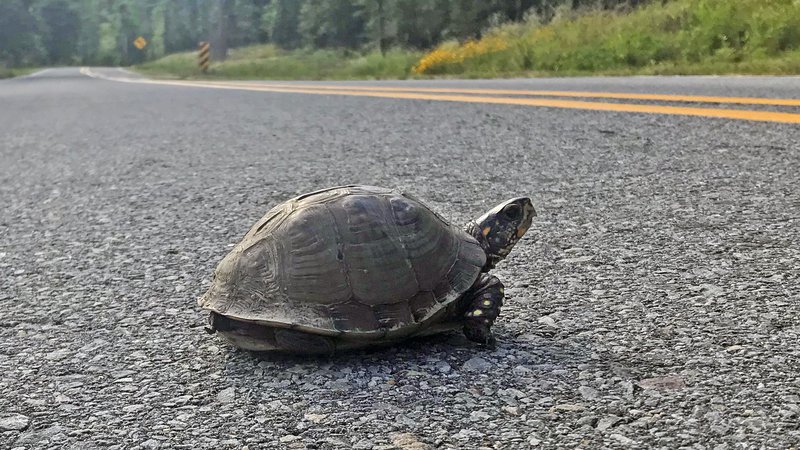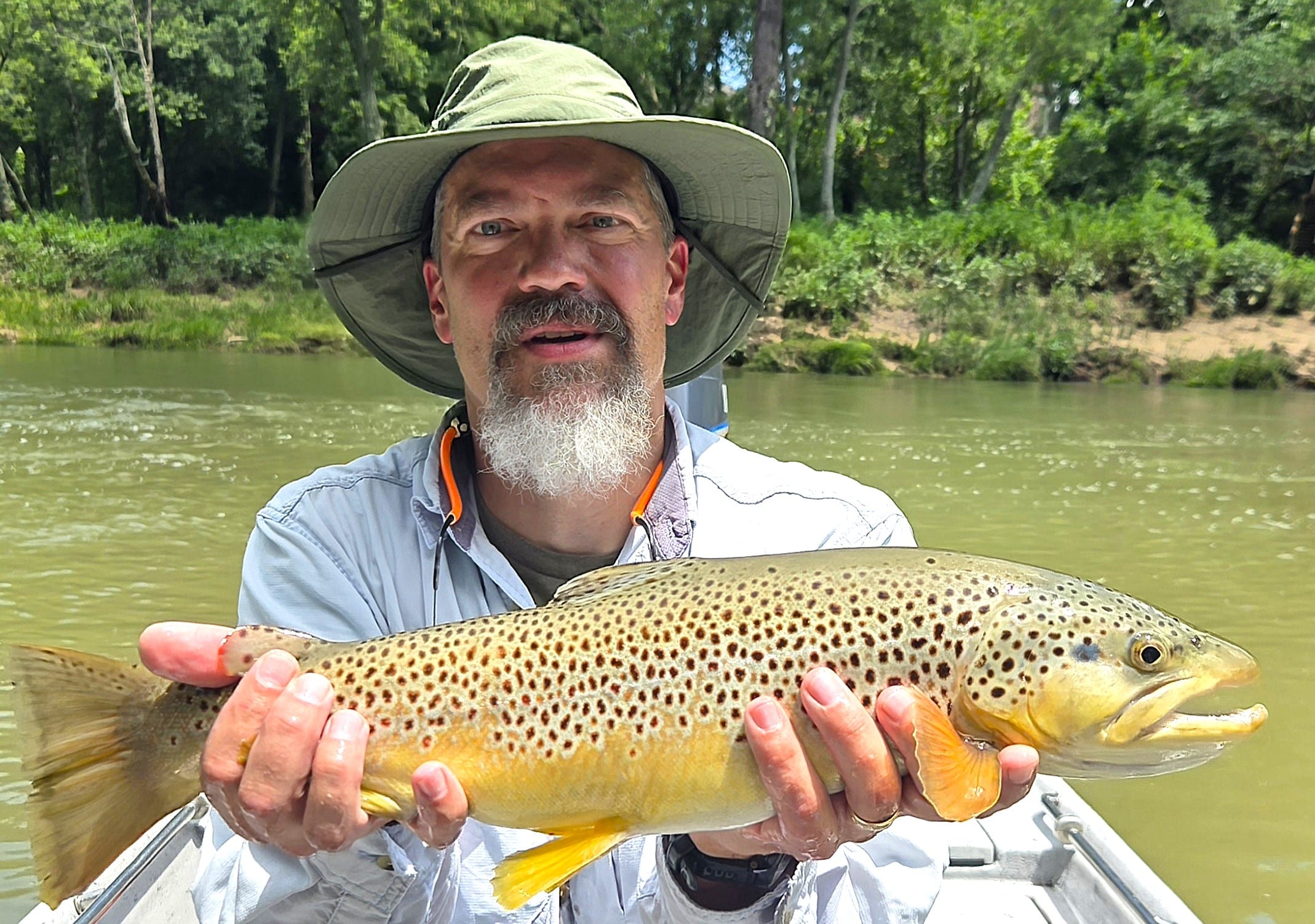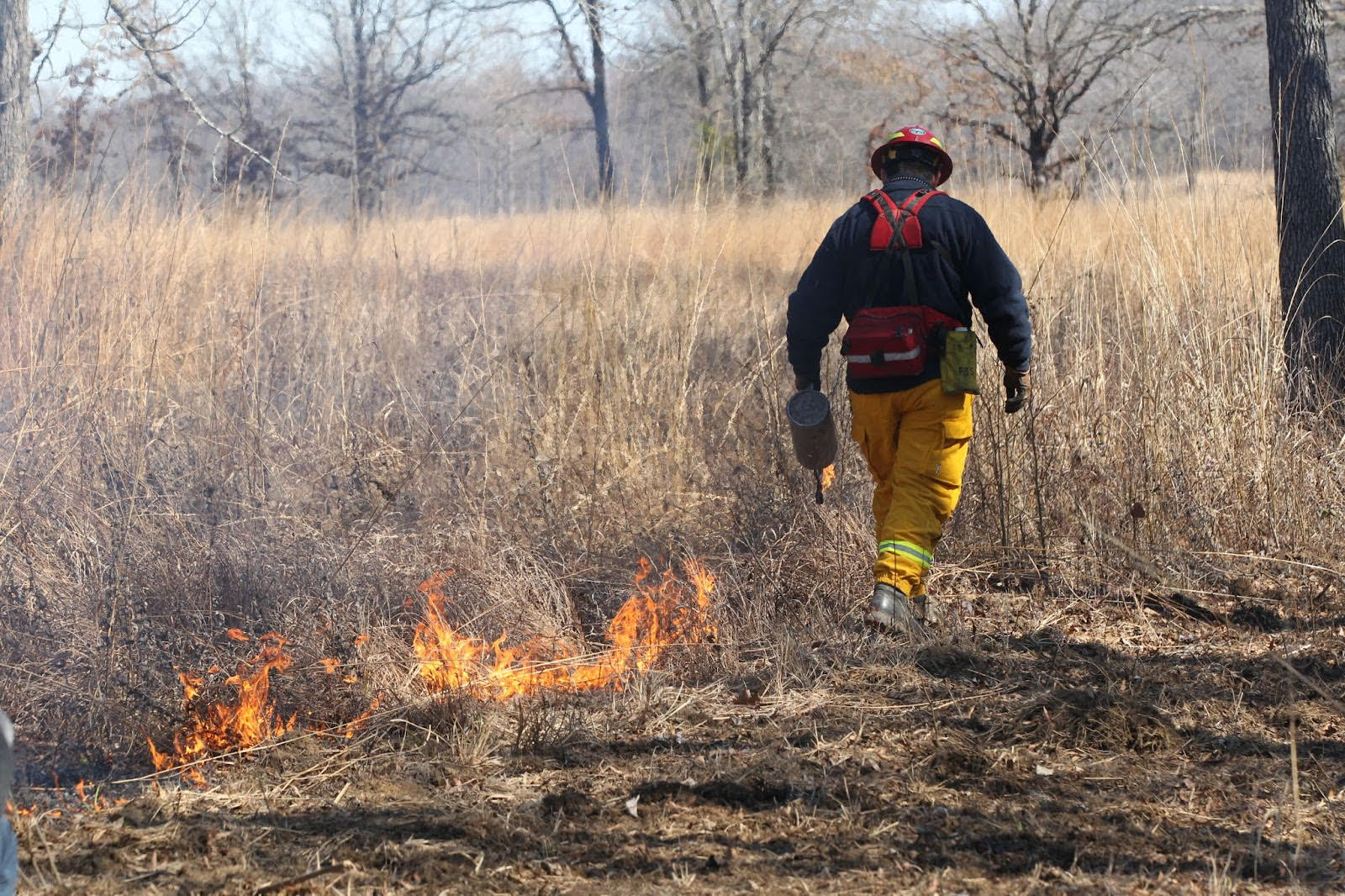Turtles taking to the streets; don’t box them in
ON 06-15-2022

June 15, 2022
Randy Zellers
Assistant Chief of Communications
LITTLE ROCK — Turtles are on the move all over Arkansas, and many can be found alongside roads in rural and suburban areas thanks to a wet, relatively cool spring that created excellent foraging areas in ditches and grassy areas beside the hustle of daily traffic. Many turtles are finishing up their annual breeding and egg-laying cycles, which also puts them on the move.
The three-toed box turtle is one of the most common turtles motorists will encounter in The Natural State. Two species of box turtle occur in the state, the three-toed and the ornate, the latter of which is protected and is illegal to possess or collect. Box turtles get their name from the hinged plastron (lower shell). Many turtles can retract into their shells, but box turtles can lift their lower shell to completely seal out any would-be attackers, forming a snug “box” of protection. Most first encounters people may have with a box turtle they’ve disturbed will be a waiting game until the reptile decides it is safe to open up and take a look around.
This ingenious defense makes adult box turtles impervious to attacks by many small predators, leaving disease and automobiles as the top causes of an individual turtle’s demise. It also endears it to curious children and adults, who often pick them up and bring them home as a wildlife pet.
While no current data is available to support any declines in three-toed box turtle populations in Arkansas, biologists at the Arkansas Game and Fish Commission say movement of these animals may have impacts on population dynamics on a small scale.
Kelly Irwin, herpetological program coordinator for the AGFC, says three-toed box turtles often will stay within the same 10- to 25-acre range for their entire life and have a strong homing instinct. If they are moved outside of this area, they may spend the rest of their lives wandering, trying to reorient themselves, especially if turtles are already present in the area where they are placed.
“One recent study moved a number of box turtles to a new location and tracked their movements,” Irwin said. “Only 47 percent of those moved established a home range in the new area. The rest wandered away or died.”
Irwin says the issue is compounded by the turtle’s relatively long time to reach sexual maturity.
“Box turtles can take between 5 and 10 years to become sexually mature, depending on their sex and the conditions where they live,” Irwin said. “They can have multiple clutches of 2 to 6 eggs per year, but the nest and young are susceptible to raccoons, skunks, foxes, snakes and many other small predators.”
Research by Kurt Buhlmann and Gina Coffman at the University of Georgia’s Savannah River Ecology Laboratory in 2001 also indicates that fire ants can have detrimental effects to turtle hatchlings as they emerge from their eggs. According to the research, ants could not penetrate turtle’s eggs unless there were imperfections on the egg’s surface, but did swarm on hatchlings as they began to break free of the egg.
Dr. Jenn Ballard, state wildlife veterinarian for the AGFC, says moving or concentrating turtles also can introduce or distribute diseases or parasites to new areas, which can have far-reaching impacts on populations of turtles.
A number of viruses and bacteria can cause serious problems for amphibians and reptiles, including box turtles. With few options for treating animals in the wild, preventing the spread of these pathogens to new areas is important for protecting these species.
“Moving them around the state can increase the spread of disease, but having them in captivity with other wildlife pets can expose them to even more pathogens,” Ballard said. “If one animal has a disease, you’ve just increased the chances for all of them to contract it, and if they’re later released, you may be infecting a new area.”
If someone wants to release a turtle they’ve held in captivity, they must find a permitted rehabilitator to ensure the turtle is able to survive and does not pose a risk of spreading disease or parasites it may have picked up during its time as a pet. Ballard says there are some rehabilitators who specialize in turtles among the ones listed on the AGFC’s website at www.agfc.com/rehab.
“I’d advise anyone to please contact these folks before trying to release a turtle on their own,” Ballard said. “Or better yet, think about this before they decide to take in a turtle from the wild. It’s just as enjoyable to watch them in their natural setting as it is to bring them home.”
Another common practice by budding nature lovers is to mark or cover a turtle’s shell in paint so it will be recognized upon future visits. Ballard says such practices may seem like harmless fun, but they can impact the turtle greatly.
Painting a turtle a bright color not only makes it easier for you to see, it makes it easier for predators to locate. Although most small mammals cannot get into a box turtle’s shell a persistent coyote can eventually work its way through to the turtle underneath.
“You’re really painting a target on the turtle’s back,” Ballard said.
Paints also can be toxic to turtles, depending on the type used. They can block UV light needed by the turtle throughout its life cycle.
“The shell is a living part of the turtle,” Ballard said. “Hindering UV light absorption impacts Vitamin D production, which is vital to the turtle for bone and shell development.”
Irwin says enjoying reptiles and amphibians in the wild is one of the experiences that led him on the path to being a part of their conservation, and he encourages people to continue enjoying them in their natural setting.
“With the exception of venomous snakes, reptiles and amphibians are one of the few groups of animals someone could get close to and observe without fear or danger to them or the animals,” Irwin said. “I think it’s great that people enjoy these animals, and picking up an occasional box turtle, bullfrog or speckled kingsnake isn’t going to hurt things, but they do need to think about any consequences of moving them from the habitat where they were found. And doing things like painting them or marking them can only cause stress or make them more vulnerable to predation or disease.”
Recent News

Arkansas Wildlife Weekly Fishing Report
Jul. 3, 2025
Subscribe to Our Weekly Newsletter E-mails
Don’t miss another issue. Sign up now to receive the AGFC Wildlife Weekly Newsletter in your mailbox every Wednesday afternoon (Waterfowl Reports are published weekly during waterfowl season and periodically outside the season). Fishing Reports arrive on Thursdays. Fill in the following fields and hit submit. Thanks, and welcome!

